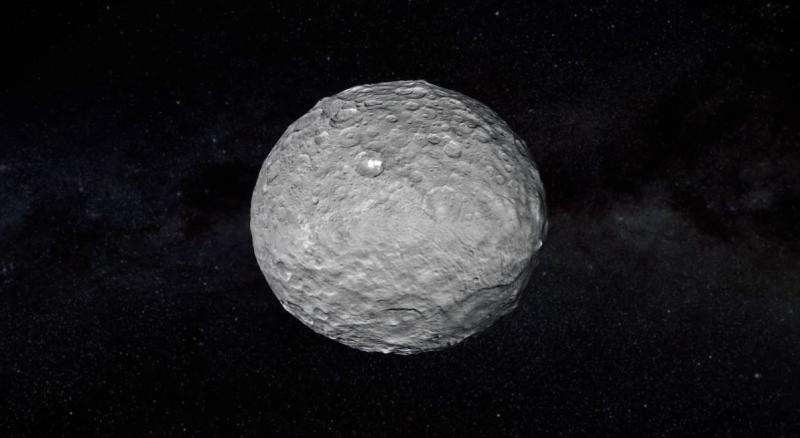July 2, 2019 report
Evidence found that suggests dwarf planet Ceres is wrinkling

A team of researchers affiliated with several institutions in Spain has found evidence that suggests the dwarf planet Ceres is experiencing wrinkling on its surface. In their paper published in the journal Nature Astronomy, the group explains their study of data from the Dawn spacecraft and what it revealed.
Prior research has shown that icy moons such as Europa and Ganymede have rifts on their surfaces that are believed to have formed as they cooled and some ice melted—because water is denser than ice, it forced expansion of the interior, resulting in cracks. Prior research has shown that planets made of rock, such a Mars and Mercury, tend to have wrinkle formations on their surfaces. It is believed that they formed as the planets cooled—when rock cools, it grows denser and contracts, in such cases, forming thrust faults. Such faults are the result of older rock being pushed over younger rock. In this new effort, the researchers report that data from the Dawn spacecraft shows thrust faults on the dwarf planet's surface.
Approximately 940 kilometers across, Ceres is the largest known object in the asteroid belt located between Jupiter and Mars. NASA launched the space probe Dawn back in 2007 for the purpose of studying three of the largest dwarf planets in the asteroid belt, one of which was Ceres. The mission ended last year, but scientists are still studying the data it sent back. The researchers in Spain report finding evidence of fractures, ridges and slopes on the surface and 15 sites that appear to be thrust faults. The existence of such faults suggests that Ceres is shrinking, and as a result, wrinkles are forming on its surface.
This finding is surprising, given the icy nature of the dwarf planet. They also noted that the thrust faults were located mostly close to the poles, but they suggest that the surface there might be easier to examine due to lighting conditions. They also propose the idea that Ceres may be shrinking due to the formation of layers of different material beneath the surface. They suggest more research focused on the thrust faults could fill in more details of the history of the dwarf planet.
More information: Javier Ruiz et al. Evidence of thrust faulting and widespread contraction of Ceres, Nature Astronomy (2019). DOI: 10.1038/s41550-019-0803-2
Journal information: Nature Astronomy
© 2019 Science X Network





















